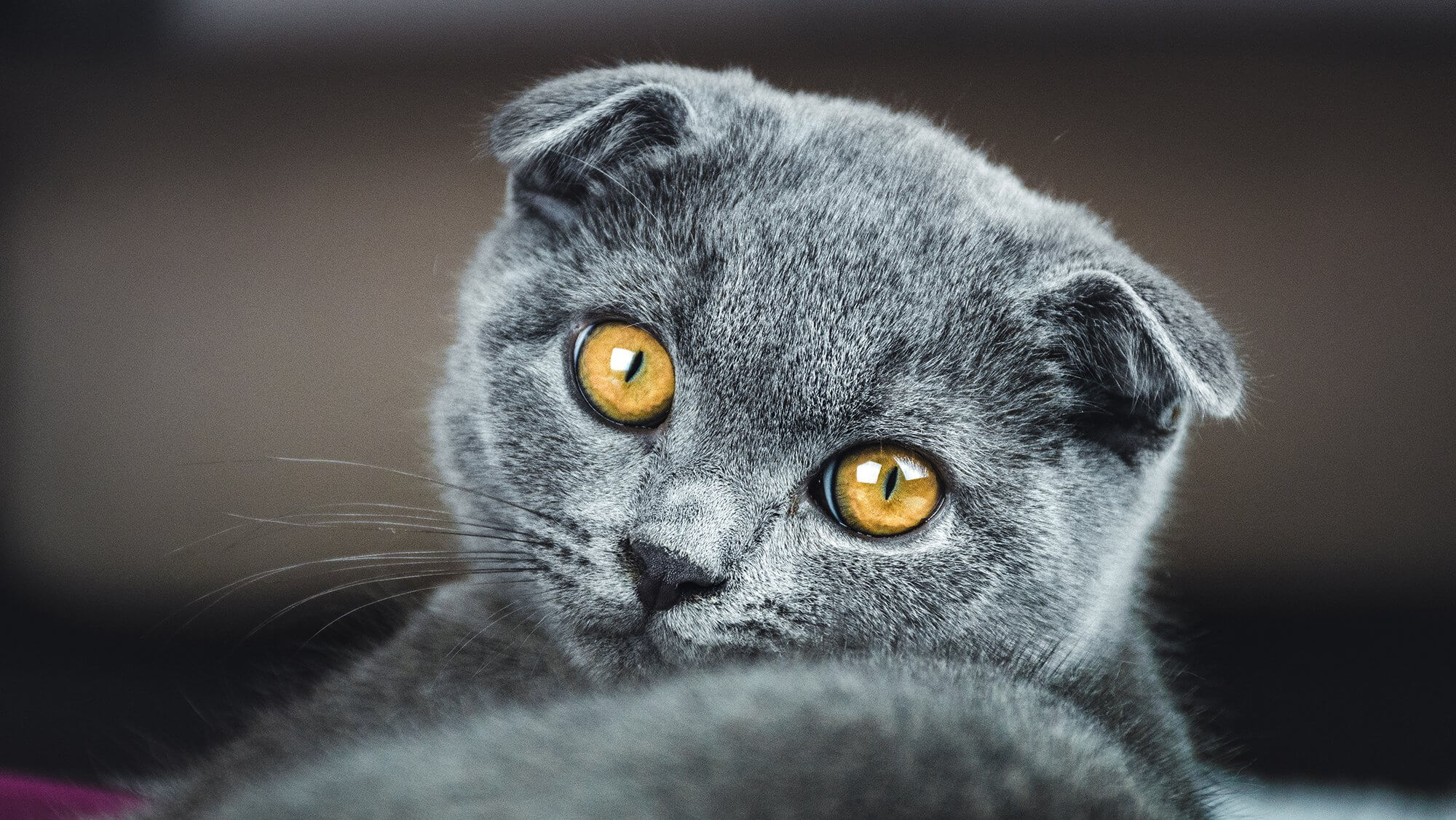The Scottish Fold cat is one of the most recognizable feline breeds, famous for its unique folded ears and sweet, round face. While they may be a recent addition to the world of purebred cats, their history is rich with interesting developments. In this article, we’ll take a closer look at where the Scottish Fold came from, how the breed gained popularity, and what it takes to raise one of these distinctive cats.
The Origins of the Scottish Fold Cat
The story of the Scottish Fold begins on a small farm in Perthshire, Scotland, in 1961. A white barn cat named Susie caught the attention of a local farmer named William Ross. Susie had an unusual trait—her ears folded forward, giving her a completely different look from other cats. Ross, intrigued by this genetic mutation, decided to breed her and see if the trait could be passed on.
Susie’s kittens inherited her distinctive ears, and soon the gene responsible for this trait was discovered. The breed was officially named “Scottish Fold” after its place of origin and the signature fold in the ears. From there, the Scottish Fold cat began its journey toward recognition as a distinct breed.
How the Folded Ears Came About
The folded ears of the Scottish Fold are the result of a genetic mutation that affects the cartilage in the cat’s ears. This mutation causes the ears to fold forward and downward, creating the breed’s signature look. The mutation is a dominant trait, meaning that only one parent needs to carry the gene for the kittens to inherit the fold. However, breeding Scottish Folds requires care, as the gene responsible for the fold can also lead to cartilage issues in other parts of the body.
This genetic aspect of the breed has made breeders cautious when selecting pairs. Breeding two Scottish Folds with folded ears can increase the risk of health problems in their kittens, so responsible breeders often pair a Fold with a cat that has straight ears. This approach helps maintain the health and vitality of the breed while still producing kittens with folded ears.
The Rise of Popularity
It wasn’t long after the Scottish Fold was first discovered that it gained attention outside of Scotland. In 1963, William Ross registered the breed with the Governing Council of the Cat Fancy (GCCF) in the UK. Despite some initial resistance due to concerns over the health of the breed, Scottish Folds began to gain popularity among cat lovers. However, the GCCF stopped recognizing the breed in 1971 due to fears that the gene responsible for the folded ears might cause health problems.
Despite this setback, the Scottish Fold found success in other parts of the world. Breeders in the United States embraced the Scottish Fold cat, and by 1978, the breed had gained recognition from the Cat Fanciers’ Association (CFA) in the U.S. Today, the Scottish Fold is a beloved breed known for its adorable appearance and friendly temperament.
Scottish Fold Cats in Pop Culture
In recent years, Scottish Fold cats have found their way into the hearts of many, thanks in part to their presence on social media. Celebrities, influencers, and everyday cat lovers have shared countless pictures of their Scottish Fold kittens, contributing to the breed’s rise in popularity. The folded ears and round faces of these cats make them incredibly photogenic, and they’ve become something of an internet sensation.
Characteristics of the Scottish Fold Cat
Appearance
The most obvious feature of the Scottish Fold cat is, of course, its ears. But the breed has other distinct characteristics that make it stand out. Scottish Folds have round faces with large, expressive eyes. Their bodies are medium-sized and muscular, and they often have a plush, dense coat that can be either short or long, depending on the specific variety.
While the folded ears are the signature trait, not all Scottish Fold kittens are born with them. Some kittens have straight ears, and these cats are often referred to as “Scottish Straights.” The ear fold typically begins to develop when the kittens are about three to four weeks old, but in some cases, it doesn’t happen at all.
Personality and Temperament
Scottish Folds are known for their calm and affectionate nature. They tend to bond closely with their owners and are often described as being very loyal. While they enjoy spending time with their human companions, they are not overly demanding or clingy. Their quiet demeanor makes them well-suited for households of all types, whether they are busy families or quieter homes.
One of the endearing quirks of the Scottish Fold cat is their love of sitting in odd positions. Many Folds have been spotted sitting upright on their haunches like a human or stretching out in strange, relaxed postures. This behavior only adds to their charm and makes them even more lovable.
Raising a Scottish Fold Kitten
Health Considerations
Raising a Scottish Fold kitten comes with some unique challenges. Because of the gene responsible for their folded ears, some Scottish Folds are prone to a condition called osteochondrodysplasia. This condition affects the development of cartilage and bones, potentially leading to arthritis and mobility issues later in life. It’s one of the reasons why it’s important to choose a reputable breeder who understands how to minimize the risk of these health problems.
Regular veterinary checkups, a healthy diet, and plenty of exercise can help keep your Scottish Fold kitten in good shape. Keeping an eye on their mobility and ensuring they maintain a healthy weight can also go a long way in preventing joint issues as they grow older.
Scottish Fold Price and Buying Considerations
If you’re considering bringing a Scottish Fold cat into your home, it’s important to understand the costs associated with the breed. The Scottish Fold price can vary depending on factors such as pedigree, location, and whether the kitten has folded or straight ears. On average, you can expect to pay anywhere from $1,000 to $3,000 for a Scottish Fold kitten from a reputable breeder. Kittens with folded ears tend to be more expensive than those with straight ears, as the folded ears are considered a more desirable trait.
It’s also worth noting that purchasing a Scottish Fold kitten from a responsible breeder is essential to ensure the long-term health and well-being of the cat. Reputable breeders will screen for genetic conditions and provide documentation of the kitten’s lineage. Avoid buying from breeders who cannot provide proof of health screenings or who sell Scottish Fold kittens at unusually low prices, as this could be a sign of poor breeding practices.
Conclusion
The Scottish Fold cat has a fascinating history that began on a humble farm in Scotland and has since become one of the most beloved breeds worldwide. With their distinctive folded ears, round faces, and sweet personalities, it’s easy to see why Scottish Folds have captured the hearts of so many. While raising a Scottish Fold kitten comes with some unique considerations, their loving and gentle nature makes them a wonderful addition to any home. Just be prepared to invest in their care and well-being, as the Scottish Fold price reflects the attention and responsibility required to maintain this beautiful breed.




